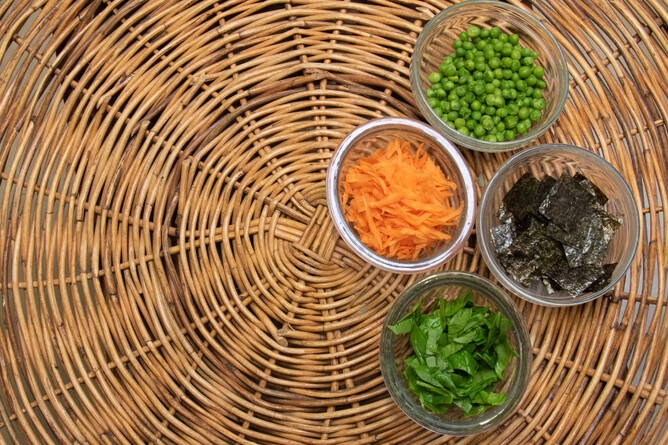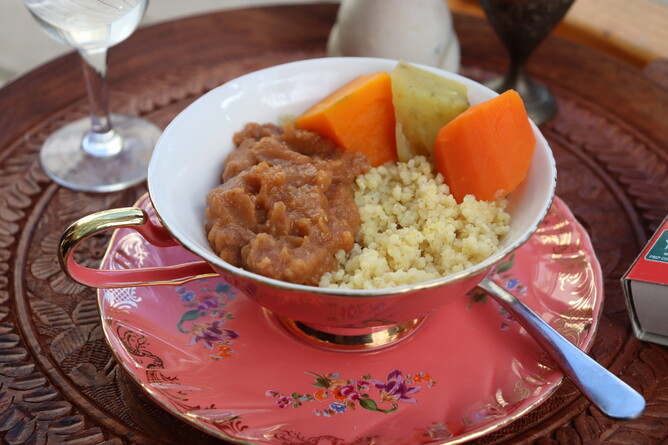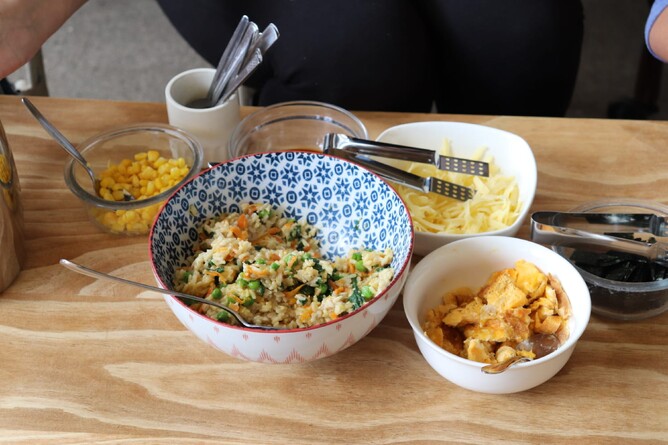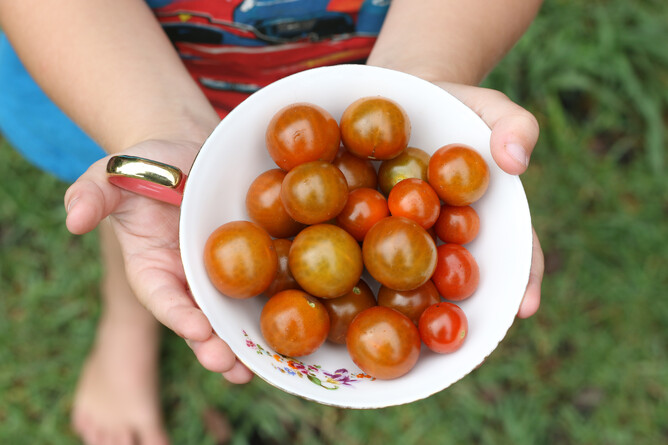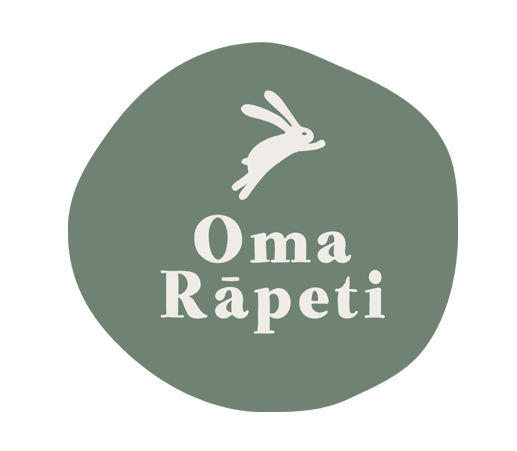A commonly considered question when sitting at your family dinner table has always been: "how do I get my children to eat the right foods?". This question has plagued parents worldwide, and concerns about eating habits and nutrition are rife in online forums and parental support groups.
Well, here’s the answer: you don't “get” your child to eat! Let’s reframe this concept. Here are your responsibilities as a parent:
- To set meal times
- To choose what is offered, and
- To choose where they eat.
It is your child’s responsibility to choose how much and what of that offered food they consume. They should be able to do that in a peaceful, respectful setting such as the family table, without pressure, and in a relaxed, happy setting.
We’re going to share our mealtime practice at Oma Rāpeti. These simple guidelines will set your child up for a happy, healthy relationship with food, and give you some ideas to implement at mealtimes at home.
Food Learning for Under Two: How We Do Mealtimes in The Burrow
Our aim within our Burrow space is to allow our children to have a slow, respectful, connected meal time. If our children can't yet sit confidently and unassisted on their own, then we will sit with them on our laps, with a small tray of food and water within reachable distance. Once children are capable movers and able to sit safely and unassisted, they are invited to join us at the table. This is completed first one-to-one before becoming a social setting. Before settling into Kai time it is important to have everything we need close by; water, food, utensils and a cloth to wipe hands and face.
We use a small table with low and sturdy stools here in our Burrow space. We believe that during mealtimes, children should not be confined or have movement restricted. Free movement is an important aspect of our approach centre-wide, and mealtimes offer a meaningful opportunity for a child to learn about choice and responsibility in a flexible setting.
Food Learning for Over Two: How We Do Mealtimes in The Meadow
In our Meadow space, we have two small tables where we ask our two-to-three year olds to sit. Then we have three slightly larger tables for our three plus age group, who are slightly more capable and able to serve themselves and select their own kai.
Our children in the Meadow space always use authentic utensils and are able to select the amounts of food from the lovely array of food offered by our cook. There is still respectful and gentle guidance from our team, they may say things such as "I can see you already have some grated cheese on your plate. When you have finished, why don't you see if you want some more?".
Kai time should be a shared and enjoyed ritual. We start kai time the same way each time: with a soft ring of our bell, and children are invited to join us. Some children may come straight away and some may need a few reminders. "Haere mai ki te kai" is a beautiful, respectful way to invite your child over for their kai. Once everyone has washed their hands, we will take a few deep breaths or simply give thanks to the person who prepared our kai that day. Before starting kai we will sing a karakia before starting our kai. This ritual continues right through our age groups and rooms, giving the children familiarity, predictability and enjoyment of their kai setting.
Our children are not forced to eat. We do like them to join us at the table, and we always offer kai at a similar time of the day. However, if they say "my puku is full", that is fine as well. In fact, that is exciting! We have a saying here, "not one spoonful more". It means they are understanding their bodies and their needs. Self regulation is such a wonderful skill to have learnt at such a young age. Obviously, we are constantly keeping a watchful eye and talking to parents - any ongoing problems will be discussed immediately. Most children however, given the chance, will eat.
But My Child is Fussy!
Ah, "fussy eaters".
First up, lets relabel these eaters from fussy to "still learning". By giving them the freedom of still being learners, you are excusing them from the pressure of eating and taking away the power of being a "fussy eater".
So, how do we help encourage children who are still learning their tastes?
We continually give the children the chance to try new foods, whilst allowing them the comfort of their familiar foods. We take the pressure away, empowering them to choose what they would like to eat. Mealtimes are an enjoyable ritual here at Oma Rāpeti with friends joining and eating alongside each other.
Slow Down.
How many times as an adult have you truly and mindfully slowed down during your meal? Eating slowly enables you to connect and enjoy your food. You might even find you don't eat as much, or you desire different foods when you are really mindful of what you are eating. Here at Oma Rāpeti, we always eat in a slow, unrushed manner. A teacher will remain sitting at the kai table until the last child has finished eating and has left the space. Not only is eating more slowly great for our hearts, but it is also safe for our bodies - sitting down and eating slowly helps keep the risk of choking in check.
Some Recipes
We have asked our cook, Brenda, for some of her wonderful recipes. You can check out the following:
More recipes coming soon
The Food Tree
Here at Oma Rāpeti we are wonderful friends with Rachael and Lorren from The Food Tree. We absolutely can't recommend their presentations and support enough if you are struggling with your child’s eating. They are kind, compassionate and knowledgeable, gently guiding your family to happier, more relaxed meal times.
If you have any particular needs around food and nutrition or would just like some general support and knowledge around your children you can contact them here.
Want to know more?
Send us a message using the get in touch page and join our mailing list. We send out a quick email once a month, letting you know of any new blogs up.

